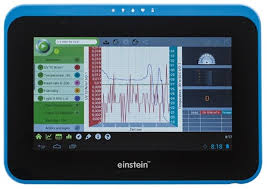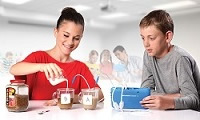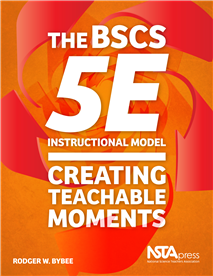Reviewing during a unit
By Mary Bigelow
Posted on 2015-05-06
 Do you have any suggestions on how to help students review and apply what they learn during a unit? I’ve tried creating games and contests, but the students don’t seem to get much out of them. —C., Minnesota
Do you have any suggestions on how to help students review and apply what they learn during a unit? I’ve tried creating games and contests, but the students don’t seem to get much out of them. —C., Minnesota
Many teachers have special review sessions prior to a test. With my middle and high school students, I found a few issues with this practice:
- Some students became so dependent on reviews that they would say, “I was absent for the review session. Do I have to take the test now?”
- The traditional games often focus on factual knowledge or vocabulary, even though the assessments had items that required higher-level thinking.
- The games and other activities took time to create, find, or adapt, and I was the one doing this. The students had little ownership in the review process.
- Even though the students enjoyed the games, they didn’t always realize that the purpose was to reinforce their learning or apply the concepts.
So I changed my plans to incorporate periodic review sessions, rather than a marathon one at the end of the unit. Here are some review activities that involved students, seemed to be most helpful for them, and did not take a lot of planning time.
The specialized vocabulary in science is a challenge for students. These activities required students to do more than match a word with a definition:
- Word Splash: Using a prepared set of words or a list generated in class, teams of students write sentences that include two or more of the words, demonstrating how they can relate and use them. Each team chooses 2-3 of their “best” sentences to share with the whole class to debrief. You can also challenge students to write an entire story using the words or do this as a gallery walk. http://nstacommunities.org/blog/2012/11/28/gallery-walks-for-middle-school/
- Word Sort: Give word lists to teams of students to categorize or match. They must provide a rationale of their thinking.
Ask students throughout the unit to create questions as a review, putting a question on one side of an index card with the response on the reverse. I found the students focused more on lower level questions. So I took cubes (I found blank ones in a craft store) and the students wrote (or pasted) six question starters Who, What, Where, When, Why, and How on them. The students, working in teams, rolled the cube and used the starter that came out on top. (If a unit did not focus on Who concepts, students used Why or How instead.) We passed the sets around during other review sessions. If a team came up with a response that was different from the one on the card or if the given response was incomplete or incorrect, they could add it (after checking it out with me and the original writers). We used these during the unit, adding to the stack after each topic, and also at other times when there were a few minutes left over in class or before a major holiday break. The students also enjoyed looking at the responses and trying to figure out the questions.
Another successful strategy was having students create “info cards.” For every unit the students each had a 4X6 index card and could write down whatever information they wanted from their notes or other references. They were allowed to refer to the cards during the test (there were very few recall items on the test). I collected the cards with the test papers so that students could not “share” their cards.
The students soon realized that they had to actually review their notes and other resources to create the card. They had to select important information, summarize, prioritize, and decide what they did or did not know–important, higher-level skills. One student remarked that making the cards was the most time he ever spent reviewing (and he had good test results to show for it).
I also observed that by having some information available during the test, the students’ responses to open-ended questions were much improved. Looking at the cards also gave me some feedback on what the students considered important. Afterwards, I asked the students to incorporate the cards into their notebooks for future reference.
These activities also served as a type of formative assessment. As students worked on them, I could circulate around the room and observe their work, looking for misconceptions, misunderstandings, or incomplete understandings.
 Do you have any suggestions on how to help students review and apply what they learn during a unit? I’ve tried creating games and contests, but the students don’t seem to get much out of them. —C., Minnesota
Do you have any suggestions on how to help students review and apply what they learn during a unit? I’ve tried creating games and contests, but the students don’t seem to get much out of them. —C., Minnesota
Many teachers have special review sessions prior to a test. With my middle and high school students, I found a few issues with this practice:
—Author Ken Roy on The NSTA Ready-Reference Guides to Safer Science
—Author Ken Roy on The NSTA Ready-Reference Guides to Safer Science
•equipping a lab for safety,
•safe materials storage and disposal,
•safe field studies, and
•equipping a lab for safety,
•safe materials storage and disposal,
•safe field studies, and
einstein™Tablet
By Edwin P. Christmann
Posted on 2015-05-01
 Designed to provide an interactive laboratory experience to science students across a wide range of ability levels, the einstein Tablet+ is a mobile device produced by Fourier Education designed to provide an interactive laboratory experience to science students across a variety of ages and grade levels. Furnished with an android operating system, the einstein Tablet+ can access the internet and download and run android applications. For example, Fourier Education produces three applications for the einstein Tablet+, which are included with the device: 1) MiLAB, 2) Einstein World, and 3) TrackIt!.
Designed to provide an interactive laboratory experience to science students across a wide range of ability levels, the einstein Tablet+ is a mobile device produced by Fourier Education designed to provide an interactive laboratory experience to science students across a variety of ages and grade levels. Furnished with an android operating system, the einstein Tablet+ can access the internet and download and run android applications. For example, Fourier Education produces three applications for the einstein Tablet+, which are included with the device: 1) MiLAB, 2) Einstein World, and 3) TrackIt!.
Using the variety of sensors available with the device , the MiLAB application allows students to record, collect, and graph data. The device has built-in sensors that can be used to detect the following: 1) UV, 2) light, 3) humidity, 4) temperature, 5) accelerometer, and 6) microphone. The einstein Tablet+ also houses five ports that can be used with any of Fourier Education’s 65 external sensors. These sensors can be used for a variety of science applications. In addition to the sensor ports, the device is equipped with a headphone jack as well as USB, HDMI, and MicroSD ports.
 Students can collect data in real time by using the MiLAB application, which has several features that allow students to record their observations and to save data for later review. For example, students can record observations alongside their graph in the notes section or take a video of their experiment. In addition, students can save graphs and screenshots and “run back” recorded graphs to review the progress of their experiment over time from the beginning to the end.
Students can collect data in real time by using the MiLAB application, which has several features that allow students to record their observations and to save data for later review. For example, students can record observations alongside their graph in the notes section or take a video of their experiment. In addition, students can save graphs and screenshots and “run back” recorded graphs to review the progress of their experiment over time from the beginning to the end.
 Another nice feature of MiLAB is the ability to create a more detailed view of their graph using the zoom function. This application also allows users to record several replications of experiments and includes multiple measurements of several different variables from those experiments on the same graph. This feature also allows students to observe changes caused by manipulating an independent variable and observe the relationship between multiple variables.
Another nice feature of MiLAB is the ability to create a more detailed view of their graph using the zoom function. This application also allows users to record several replications of experiments and includes multiple measurements of several different variables from those experiments on the same graph. This feature also allows students to observe changes caused by manipulating an independent variable and observe the relationship between multiple variables.
Although most of the sensors worked very well, the heart rate monitor and the built in temperature and humidity sensors gave us some calibration issues. However, the external temperature probe appeared to be much more responsive and accurate. Overall, the MiLAB app does have some very nice features and in most cases worked well with the device.
[youtube]https://www.youtube.com/watch?v=Fv2aOeJjoEk[/youtube]
The einstein World application allows educators to download or create interactive lab presentations. The lab presentations combine videos, notes, and audio to provide students with background information and guide them through interactive lab activities. One advantage of the einstein World application is that students can collect and graph data during the activities without having to exit. Moreover, the einstein World application adds structure to labs and lends itself to spawning more autonomous learning.
A variety of lab activities are available for download from the online einstein World store [http://einsteinworld.com/product/einstein-tablet/], including experiments with sound, light, matter and energy, living systems, and health, among others. These activities are available in various levels are suitable for students in the elementary through high school levels. In addition, teachers can also create and customize their own presentations using the online Activity Maker.
The final application that comes with the einstein Tablet+ is the TrackIt! camera application. Using TrackIt!, students can take pictures and videos of their experiments. An excellent feature of this application is that it can be set up to take photos at preset intervals.
Overall, einstein Tablet and its accessories offer a great system data collection and analysis into science classrooms across a kaleidoscope of different scientific subjects and grade levels. While it may take some time to learn how to use all the available applications, once mastered, the einstein Tablet will provide your students with a valuable tool to do scientific inquiry.
Estimated cost:
$250 for the einstein™ Tablet+
Edwin P. Christmann is a professor and chairman of the secondary education department and graduate coordinator of the mathematics and science teaching program at Slippery Rock University in Slippery Rock, Pennsylvania, Katherine Wingard is a graduate student and a research assistant in the mathematics and science teaching program at Slippery Rock University in Slippery Rock, Pennsylvania, and Corissa Fretz is a graduate student and a research assistant in the mathematics and science teaching program at Slippery Rock University in Slippery Rock, Pennsylvania.
 Designed to provide an interactive laboratory experience to science students across a wide range of ability levels, the einstein Tablet+ is a mobile device produced by Fourier Education designed to provide an interactive laboratory experience to science students across a variety of ages and grade levels.
Designed to provide an interactive laboratory experience to science students across a wide range of ability levels, the einstein Tablet+ is a mobile device produced by Fourier Education designed to provide an interactive laboratory experience to science students across a variety of ages and grade levels.
Create Teachable Moments for Your Students
By Carole Hayward
Posted on 2015-05-01
 Like classroom teachers at all levels and disciplines, you have probably experienced teachable moments. They are those positive distractions from planned lessons where students are engaged and you have the opportunity to explore ideas and provide an explanation or insight. These are exciting, even magical, moments for teachers.
Like classroom teachers at all levels and disciplines, you have probably experienced teachable moments. They are those positive distractions from planned lessons where students are engaged and you have the opportunity to explore ideas and provide an explanation or insight. These are exciting, even magical, moments for teachers.
In The BSCS 5E Instructional Model: Creating Teachable Moments, author Rodger Bybee explains why a teachable moment occurs:
“Teachable moments occur when individuals experience something they recognize and that has meaning, but they cannot formulate an explanation for the phenomenon or experience. The experience is within their cognitive grasp but beyond their full understanding…. At a slightly deeper level, the student is expressing cognitive disequilibrium with phenomena in the classroom, school, or environment. In short, the student’s current knowledge and understanding do not provide an explanation for something he or she has experienced.”
A former executive director of the Biological Sciences Curriculum Study (BSCS) and an author of this instructional model, Bybee describes the BSCS 5E Instructional Model as an approach to teaching that centers on important content and abilities and that increases the opportunities for teachable moments.
As a classroom teacher, you do not have to wait for something out of the blue; you can create teachable moments by using a sequence of lessons that includes engaging experiences and activities for students, but the experiences should be beyond students’ immediate grasp. Imagine using an instructional sequence that begins with an experience of high interest but is beyond students’ understanding, and then the lessons provide opportunities for students to sort out their ideas and try to explain the initial situation as the sequence continues.
This leads you to the moment where you can help students gain knowledge and understanding of the experience. Then, you provide a situation where students have to apply their new knowledge to another situation. Finally, students and the teacher conclude with an assessment.
What Are the 5Es?
The BSCS instructional model consists of five phases of learning:
- Engage: The goal of this phase is to capture the students’ attention; it need not be a full lesson, but often it is.
- Explore: Students participate in activities that provide the time and opportunities to resolve the mental disequilibrium or dissonance of the engagement experience.
- Explain: Keeping students connected to, and explaining, the teachable moment is the emphasis of this phase.
- Elaborate: Students are involved in learning experiences that expand and enrich the concepts and abilities developed in the prior phases.
- Evaluate: Teachers and students should receive feedback on the adequacy of their explanations and abilities, so students should be involved in activities that are consistent with those of prior phases and designed to assess their explanations.
With this brief introduction, you can see the rich opportunities that the BSCS 5E Instructional Model affords for creating teachable moments for your students. This model will help teachers bridge the gap between research on learning and the realities of classrooms. Once you understand the aims, orientation, and flexibility of the five phases, you can incorporate the unique demands of the Common Core State Standards, NGSS, and other state and local standards.
This book is also available as an e-book.
The mission of NSTA is to promote excellence and innovation in science teaching and learning for all.
Follow NSTA
Ideas from visiting another classroom
By Peggy Ashbrook
Posted on 2015-04-29
Visiting other schools always makes me think about classroom organization, I get new ideas about how to document children’s learning, and gets me thinking about changes I want to implement in my teaching. Changes in weather often lead to changes in activities and we begin favorite spring investigations and look for new ways to explore and record the children’s work. With the warmer weather, children can get wet and not have to change clothes to remain comfortable. So I was happy to see some new ways of documenting water exploration by a four-year-old class in another school.
 This school has a Question of the Morning for parents and children to consider together at drop off time, a time of transition that gets its own time slot, not just a moment but a period of time that is planned for. The questions are considered for as long as the child is interested and the responses are recorded by either, or both, child and adult.
This school has a Question of the Morning for parents and children to consider together at drop off time, a time of transition that gets its own time slot, not just a moment but a period of time that is planned for. The questions are considered for as long as the child is interested and the responses are recorded by either, or both, child and adult.
Some of the questions relate to an investigation that the children are pursuing, such as into the properties of water.  Sensory tables and tubs, buckets and mud puddles provide experiences with water. Children can find out about the properties of water using tools such as scoops, funnels, droppers, spoons, sieves, cups,
Sensory tables and tubs, buckets and mud puddles provide experiences with water. Children can find out about the properties of water using tools such as scoops, funnels, droppers, spoons, sieves, cups, sponges, tubes….the list is endless! Don’t forget towels to learn about absorption and to keep the floor from being slippery. Begin with a few and tools can be added and set aside as needed when children begin playing with pouring, flow and containment. Drying off the playground equipment is a “real life” link to this investigation.
sponges, tubes….the list is endless! Don’t forget towels to learn about absorption and to keep the floor from being slippery. Begin with a few and tools can be added and set aside as needed when children begin playing with pouring, flow and containment. Drying off the playground equipment is a “real life” link to this investigation.

 Further documentation of children’s thinking has been linked together on lengths of string—a visual of how the ideas are linked around the central idea of “How does water influence your world?” I wish I could have heard the conversation about the meaning of the word “influence.” “How does water influence your world?” So much more active and of consequence than “Where do you see water?”
Further documentation of children’s thinking has been linked together on lengths of string—a visual of how the ideas are linked around the central idea of “How does water influence your world?” I wish I could have heard the conversation about the meaning of the word “influence.” “How does water influence your world?” So much more active and of consequence than “Where do you see water?”
Using a small amount of water can be just as engaging as pouring from buckets. In this activity inspired by a workshop led by Karen Worth and Jeff Winokur from Wheelock College and EDC, Inc., children make drops and talk about their shape and appearance on different surfaces. Other ways for working with water include holding melting ice, and painting with liquid water!
 Manipulating larger amounts of water with tools can lead to creating a system, requiring children to think about cause and effect and how the pieces can go together to meet a goal. Can you suggest some more ways to document this work?
Manipulating larger amounts of water with tools can lead to creating a system, requiring children to think about cause and effect and how the pieces can go together to meet a goal. Can you suggest some more ways to document this work?
3006
Visiting other schools always makes me think about classroom organization, I get new ideas about how to document children’s learning, and gets me thinking about changes I want to implement in my teaching. Changes in weather often lead to changes in activities and we begin favorite spring investigations and look for new ways to explore and record the children’s work. With the warmer weather, children can get wet and not have to change clothes to remain comfortable. So I was happy to see some new ways of documenting water exploration by a four-year-old class in another school.
Online resource collections
By Mary Bigelow
Posted on 2015-04-29

NSTA’s SciLinks has a searchable database of vetted websites with information, graphics, and lesson plans. These cover topics K-12 in the life, physical and earth sciences as well as health and engineering. The sites are correlated to specific keywords (such as Food Chains, Phases of the Moon, or Magnetic Fields). The data base is available to any teacher.
There are other online collections of more focused resources. Although many of the individual resources have been aligned with specific SciLinks keywords and are included in the database, the entire collection may be of interest to teachers looking for supplements, lesson suggestions, differentiation ideas, enrichment opportunities for students, or to enhance their own knowledge.
These are not simply lists of someone’s favorite websites. These are activities, simulations, and resources created by organizations or institutions as part of an outreach program or related to their projects and research. You can search for sites by grade level and subject area. No fees or paid subscriptions are required, although users may be asked to register. Here are just a few examples:
- TeachEngineering is designed “to make applied science and math come alive through engineering design in K-12 settings.” Concepts in life, earth and physical science are taught, connected, and reinforced through real-life problems or scenarios in student- and teacher-friendly formats. There is also an option to search by NGSS standards. The lessons have been designed by university engineering faculty and teachers. Example: 20/20 Vision for grades 3-5 illustrates the format and design of the lessons.
- The Royal Society of Chemistry’s (UK) Learn Chemistry site provide access to thousands of chemistry-related activities, simulations, games, tutorials, handouts, quizzes, journal articles, podcasts, apps, and videos in a searchable format for both teachers and students. Example: The Mole, a bi-monthly E-zine written in student-friendly language
- Middle School Chemistry (from the American Chemical Society) is “a resource of guided, inquiry-based lesson plans that covers basic chemistry concepts along with the process of scientific investigation.” The lessons are written in the 5E model and include background information and student activity sheets. The lessons can be accessed individually or the entire resource can be downloaded as a PDF file. Example: Heat, Temperature, and Conduction illustrates the design and format of the lessons.
- Kids Health from the Nemours Foundation has health and wellness resources (including information on human body systems) for kids, teens, educators, and parents. These often have a Spanish version and they can be downloaded, printed, or emailed to share with parents or to use in class. Example: The Digestive System has a brief video, an article (also in Spanish), and a quiz.
- Biointeractive from the Howard Hughes Medical Institute (HHMI) has a searchable collection of free resources for science teachers and students, including animations, short films, lectures, virtual labs, and apps. Example: A search for “Environmental Science” produces 42 resources, including the EarthViewer app.
Photo: http://www.flickr.com/photos/treevillage/5107999448/sizes/l/in/photostream/

NSTA’s SciLinks has a searchable database of vetted websites with information, graphics, and lesson plans. These cover topics K-12 in the life, physical and earth sciences as well as health and engineering. The sites are correlated to specific keywords (such as Food Chains, Phases of the Moon, or Magnetic Fields). The data base is available to any teacher.






